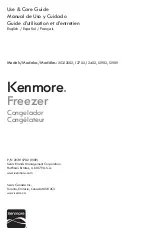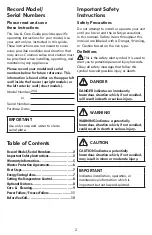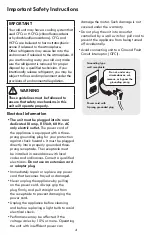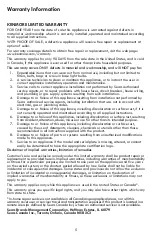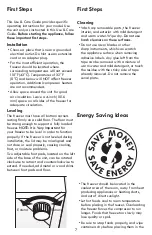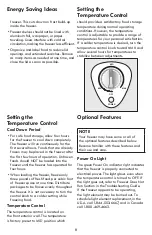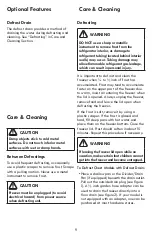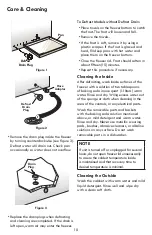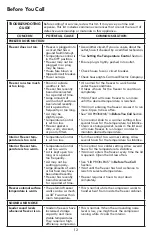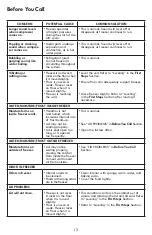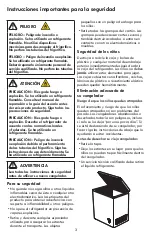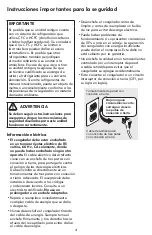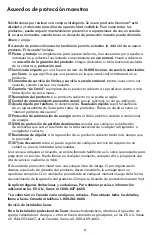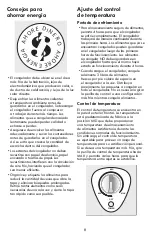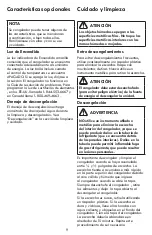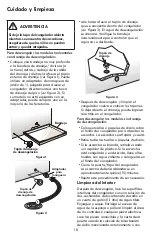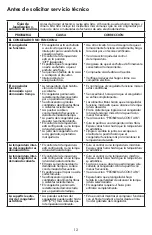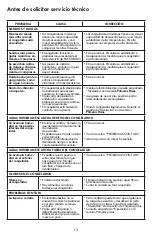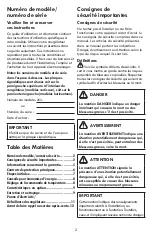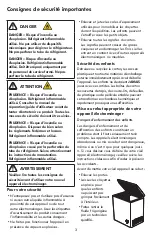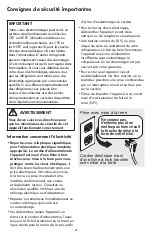
13
Before You Call
CONCERN
POTENTIAL CAUSE
COMMON SOLUTION
Longer sound levels
when compressor
comes on.
• Freezer operates
at higher pressures
during the start of the
ON cycle.
•
This is normal. Sound will level off or
disappear as freezer continues to run.
Popping or cracking
sound when compres-
sor comes on.
• Metal parts undergo
expansion and
contraction, as in hot
water pipes.
•
This is normal. Sound will level off or
disappear as freezer continues to run.
Bubbling or
gurgling sound, like
water boiling.
•
Refrigerant (used
to cool freezer) is
circulating throughout
the system.
•
This is normal.
Vibrating or
rattling noise.
•
Freezer is not level. It
rocks on the floor when
it is moved slightly.
• Floor is uneven or
weak. Freezer rocks
on floor when it is
moved slightly.
•
Freezer is touching
the wall.
•
Level the unit. Refer to “Leveling” in the
First
Steps
Section.
•
Ensure floor can adequately support freezer.
•
Move freezer slightly. Refer to “Leveling”
in the
First Steps
Section after moving if
necessary.
WATER/MOISTURE/FROST INSIDE FREEZER
Moisture forms on
inside freezer walls.
•
Weather is hot
and humid, which
increases internal rate
of frost build-up.
•
Lid may not be
seating properly.
•
Lid is kept open too
long, or is opened
too frequently.
•
This is normal.
•
See “LID PROBLEMS” in
Before You Call
Section.
•
Open the lid less often.
WATER/MOISTURE/FROST OUTSIDE FREEZER
Moisture forms on
outside of freezer.
•
Lid may not be
seating properly,
causing the cold air
from inside the freezer
to meet warm moist
air from outside.
•
See “LID PROBLEMS” in
Before You Call
Section.
ODOR IN FREEZER
Odors in freezer
•
Interior needs to
be cleaned.
• Foods with strong odors
are in the freezer.
•
Clean interior with sponge, warm water, and
baking soda.
•
Cover the food tightly.
LID PROBLEMS
Lid will not close.
•
Freezer is not level.
It rocks on the floor
when it is moved
slightly.
• Floor is uneven or
weak. Freezer rocks
on floor when it is
moved slightly.
•
This condition can force the cabinet out of
square and misalign the lid and lid seal. Refer
to “Leveling” in the
First Steps
Section.
•
Refer to “Leveling” in the
First Steps
Section.

